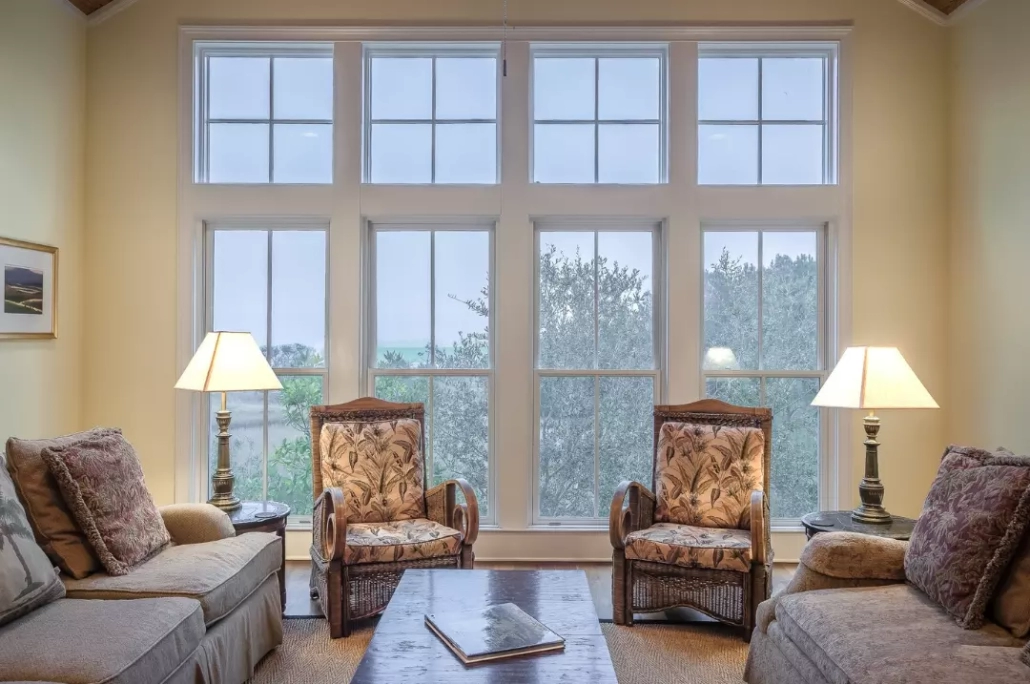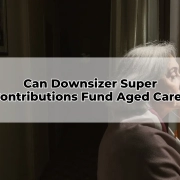How to choose the right aged care provider?
Table of Contents
ToggleAs the population ages, the need for quality aged care services in Australia has become increasingly important. Finding the right aged care provider can be a complex and daunting task, with numerous factors to consider.
In this guide, we will explore the key considerations when selecting an aged care provider, including costs, facility types, accommodation options, and legal considerations. Whether you or your loved ones are currently in need of aged care services or anticipate requiring them in the near future, this blog post aims to provide valuable insights and help you make informed decisions.
Choosing the right aged care provider
Understand Your Needs
Before beginning your search for an aged care provider, it’s crucial to assess your specific needs. Consider the level of care required, any specific health conditions or specialised services needed, and any cultural or language preferences. Understanding your needs will help you narrow down your options and ensure a suitable match.
Research and Compare Providers
Once you have identified your requirements, it’s time to research and compare aged care providers. Start by checking the My Aged Care website, which provides a comprehensive directory of approved providers in your area. Look for providers that align with your specific needs and preferences, and consider factors such as reputation, experience, and quality of care. Additionally, read online reviews and seek recommendations from trusted sources to gather a balanced perspective.
Visit and Assess Facilities
Arrange visits to the shortlisted aged care facilities to assess their suitability. During the visit, pay attention to the cleanliness, safety measures, and overall ambiance of the facility. Talk to staff members and observe how they interact with residents. Inquire about the range of services offered, activities available, and the staff-to-resident ratio. This firsthand experience will help you gauge the quality of care and determine if the facility meets your expectations.
Understand Costs and Funding Options
Aged care can be a significant financial investment, so it’s essential to understand the costs and explore funding options. The costs associated with aged care services vary based on factors such as location, accommodation type, and level of care needed. Familiarise yourself with the fee structures, including basic daily fees, means-tested fees, and accommodation costs.
Consult with a financial advisor or the Services Australia to understand the various funding options available, such as the Age Pension, Home Care Packages, and Residential Care Subsidies.
Consider Accommodation Options
Aged care providers offer different types of accommodation, including residential care facilities, retirement villages, and home care services. Evaluate the pros and cons of each option based on your preferences and needs.
Residential care facilities provide round-the-clock care, while retirement villages offer a more independent lifestyle. Home care services allow individuals to receive care in the comfort of their own homes.
Consider factors such as proximity to family and friends, social activities, and the level of support required when deciding on the most suitable accommodation option.
Legal Considerations
Understanding the legal aspects of aged care is crucial to ensure your rights and obligations are protected. Familiarise yourself with the Aged Care Act and the Charter of Aged Care Rights, which outline the rights and responsibilities of care recipients.
Take the time to review contracts and agreements thoroughly before signing, and seek legal advice if necessary. It’s important to have a clear understanding of the terms and conditions, refund policies, and dispute resolution processes to avoid any potential issues in the future.
Choosing the right aged care provider is a significant decision that can greatly impact the well-being and quality of life of yourself or your loved ones. By understanding your needs, conducting thorough research, visiting facilities, considering costs and accommodation options, and being aware of the legal considerations, you can make an informed decision. Remember to seek advice from trusted sources and consult with professionals to ensure the best possible outcome.
With careful consideration and due diligence, you can find an aged care provider that meets your requirements and provides the quality care and support you deserve.

Differences in costs between aged care providers
Aged care providers offer a range of services, including residential care, home care, and respite care. When comparing costs, it’s important to consider the specific needs and preferences of the individual requiring care.
Assessing the quality of care, reputation, and location of providers is essential to make an informed decision.
There are several types of costs associated with aged care, and it’s crucial to understand each one before comparing providers:
Basic Daily Fee
This fee covers living expenses, such as meals, laundry, and basic care services. It is set at 85% of the Australian single aged pension and is applicable to all residents.
Means-Tested Care Fee
Depending on the individual’s financial circumstances, means tested care fee is determined by the Services Australia. It takes into account income, assets, and other factors.
Accommodation Payment
If an individual is entering residential aged care, they may be required to make an accommodation payment. This can be paid as a lump sum (Refundable Accommodation Deposit – RAD) or as periodic payments (Daily Accommodation Payment – DAP). The choice between the two options depends on personal financial circumstances.
Additional Services Fee
Some providers offer additional services beyond the standard care. These services may include premium accommodation, specialised therapies, or enhanced lifestyle options. This fee is optional and varies between providers.

Comparing Costs
To effectively compare costs between aged care providers, follow these steps:
1. Research and shortlist providers
Utilise online directories, government websites, and recommendations to create a list of potential providers that suit your needs.
2. Request information
Contact the shortlisted providers to obtain detailed information about their costs, services, and accommodation options.
3. Evaluate the financial impact
Consider the individual’s financial situation and how the different fees will affect them. Use online calculators and seek financial advice if needed.
4. Compare the accommodation options
Assess the quality, facilities, and location of the residential aged care facilities to ensure they align with the individual’s preferences.
5. Seek recommendations and reviews
Reach out to friends, family, or support groups to gather feedback and insights about the shortlisted providers.

The differences between high-care and low-care aged care facilities
There are various types of aged care facilities available, ranging from high-care to low-care options. We will explore the differences between these two types of facilities and provide valuable insights to help you make informed decisions during this important stage of life.
High-Care Aged Care Facilities
High-care aged care facilities, also known as nursing homes or residential aged care facilities (RACFs), are designed for individuals who require 24-hour professional nursing care and assistance with daily activities. These facilities cater to seniors with complex medical conditions, mobility limitations, or cognitive impairments such as dementia.
Key Features of High-Care Facilities
- Skilled Nursing Care: High-care facilities offer round-the-clock nursing care provided by qualified professionals, including registered nurses and personal care attendants. This level of care ensures that individuals with complex health needs receive appropriate medical attention and support.
- Specialised Support: High-care facilities provide a range of specialised services, including medication management, rehabilitation programs, palliative care, and access to medical specialists. These services aim to address the specific needs of residents with complex medical conditions.
- Personal Care Assistance: Residents in high-care facilities receive assistance with activities of daily living (ADLs), such as bathing, dressing, toileting, and eating. Trained staff members are available to support residents in maintaining their personal hygiene and overall well-being.
Low-Care Aged Care Facilities
Low-care aged care facilities, also known as assisted living or retirement villages, are designed for individuals who require minimal assistance with daily activities but still want access to supportive services and a social community. These facilities cater to seniors who are generally independent but may need occasional help or prefer a maintenance-free lifestyle.
Key Features of Low-Care Facilities
- Independent Living: Low-care facilities provide accommodation options that range from independent living units or villas to self-contained apartments. These options allow residents to maintain their independence while having access to communal areas and amenities within the facility.
- Supportive Services: While residents in low-care facilities are generally self-sufficient, they can access various supportive services such as housekeeping, maintenance, and scheduled social activities. These services enhance the quality of life and provide a sense of community and security.
- Personal Assistance: Although not as extensive as in high-care facilities, low-care facilities offer some level of personal assistance, including help with housekeeping, medication management, and transportation services. Residents can customise their care plans based on their individual needs.

The benefits and drawbacks of shared accommodation in aged care
As the need for aged care services continues to rise in Australia, it is essential to understand the various accommodation options available and their associated benefits and drawbacks.
We will explore the concept of shared accommodation in aged care and provide valuable insights to help individuals and their families make informed decisions when considering an aged care provider.
Understanding Aged Care Providers
When it comes to aged care, selecting the right provider is crucial. An aged care provider is an organisation that offers a range of services to meet the needs of older individuals, including residential care, home care, and support services. These providers are responsible for ensuring the well-being, comfort, and safety of their residents.
Benefits of Shared Accommodation
- Social Interaction: Shared accommodation can provide opportunities for increased social interaction and companionship. Older individuals can engage in meaningful conversations, participate in activities, and develop lasting friendships with fellow residents.
- Shared Costs: Sharing accommodation can help alleviate financial burdens as costs, such as rent, utility bills, and maintenance fees, are shared among residents. This can make aged care more affordable, particularly for those with limited financial resources.
- Emotional Support: Living with others in a shared accommodation setting can offer emotional support during challenging times. Residents can provide each other with encouragement, empathy, and a sense of community, fostering a positive environment.
- Enhanced Services: Shared accommodation often comes with additional services and amenities, such as communal dining areas, recreational facilities, and organized social activities. These offerings can enhance the overall living experience and promote a sense of well-being.
Drawbacks of Shared Accommodation
- Lack of Privacy: Sharing accommodation means sacrificing some level of privacy. Individuals may have to share bedrooms, bathrooms, or common living spaces, which can limit personal space and privacy.
- Noise and Disruptions: Living with other residents can lead to noise and disruptions, which may not be suitable for everyone. It is essential to consider individual preferences and tolerance for potential disturbances.
- Compatibility Concerns: Shared accommodation relies on the compatibility of residents. It is crucial to assess personal preferences, lifestyles, and care needs to ensure a harmonious living environment for everyone involved.
- Limited Control: When residing in shared accommodation, decisions regarding certain aspects of daily living, such as meal times or recreational activities, may be influenced by communal consensus, limiting individual control.

The legal rights and responsibilities of aged care providers and residents
As we or our loved ones age, the need for quality aged care services becomes increasingly important. When considering aged care options, it is essential to have a clear understanding of the legal rights and responsibilities that both aged care providers and residents possess. This knowledge empowers individuals and their families to make informed decisions and ensure a safe and supportive environment for their loved ones.
We will explore the legal framework surrounding aged care in Australia and shed light on the rights and responsibilities of aged care providers and residents.
The Legal Framework for Aged Care in Australia
Aged care services in Australia are governed by various legislation and regulations to protect the rights and well-being of residents. The primary legislation that guides aged care services is the Aged Care Act 1997. This Act outlines the rights and responsibilities of both aged care providers and residents, emphasising the importance of dignity, choice, and autonomy.
Rights and Responsibilities of Aged Care Providers
Aged care providers play a crucial role in delivering quality care and support to residents. They have specific legal responsibilities, including:
Provision of Appropriate Care
Aged care providers must ensure that residents receive appropriate care that meets their individual needs and promotes their well-being.
Safety and Security
Providers are responsible for maintaining a safe and secure environment, free from abuse, neglect, and exploitation. This includes implementing measures to prevent falls, managing medication safely, and protecting residents’ personal information.
Staffing and Training
Aged care providers are responsible for employing qualified and trained staff who can deliver competent care. They must ensure appropriate staffing levels to meet the needs of residents.
Transparency and Information
Providers must provide clear and accurate information about their services, fees, and any changes in care arrangements. They should facilitate open communication and engage residents and their families in decision-making processes.
Rights and Responsibilities of Aged Care Residents
Aged care residents have certain rights and responsibilities that ensure their well-being and maintain their dignity. These include:
Quality Care and Services
Residents have the right to receive high-quality care and services that respect their individual needs, preferences, and cultural background. They should be involved in decisions about their care and treatment.
Dignity and Privacy
Residents have the right to be treated with dignity, respect, and privacy. They should have control over their personal information and be involved in decisions regarding their privacy and confidentiality.
Complaints and Advocacy
Residents have the right to make complaints and have them addressed promptly and fairly. They can seek advocacy support if needed to ensure their concerns are addressed.
Responsibilities
Residents are expected to participate in their care planning and decision-making, follow the rules and policies of the aged care facility, and respect the rights and privacy of other residents and staff.

Choosing the right aged care provider requires careful evaluation of your needs, budget, facility types, accommodation options, and legal considerations.
By following the steps outlined in this guide, you’ll be better equipped to navigate the complexities of aged care and make informed decisions for yourself or your loved ones. Remember, thorough research, visiting facilities, and seeking professional advice are crucial to finding the best aged care provider that meets your specific requirements.








